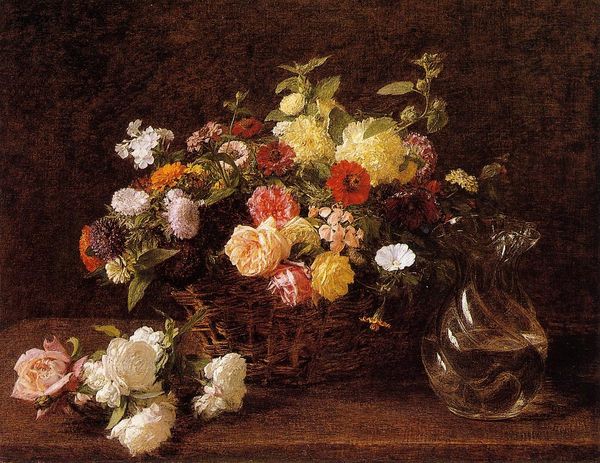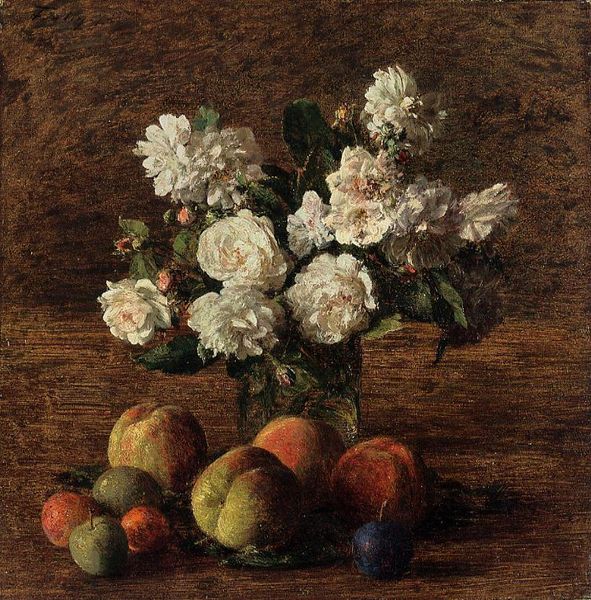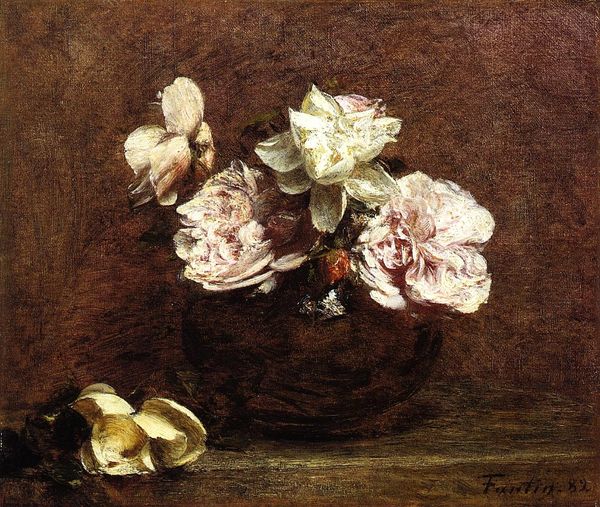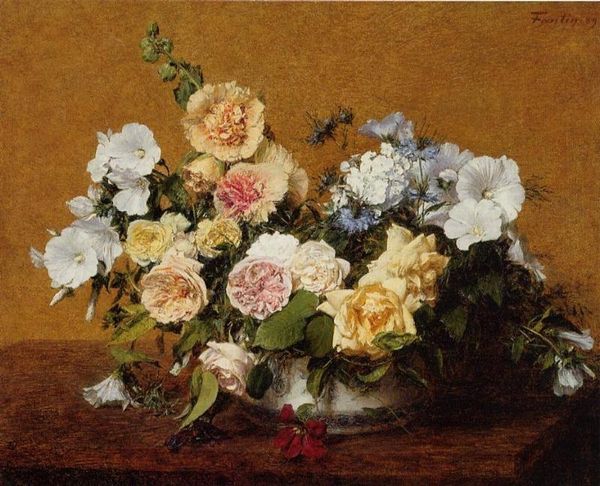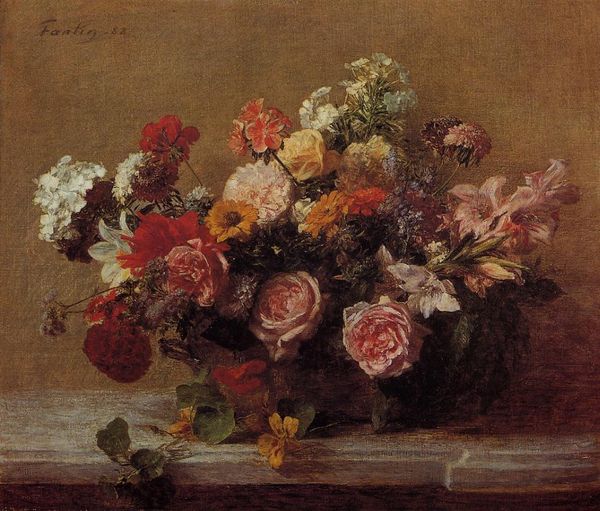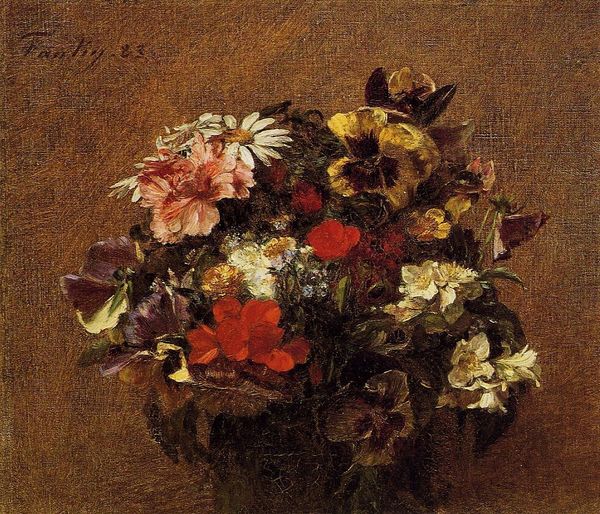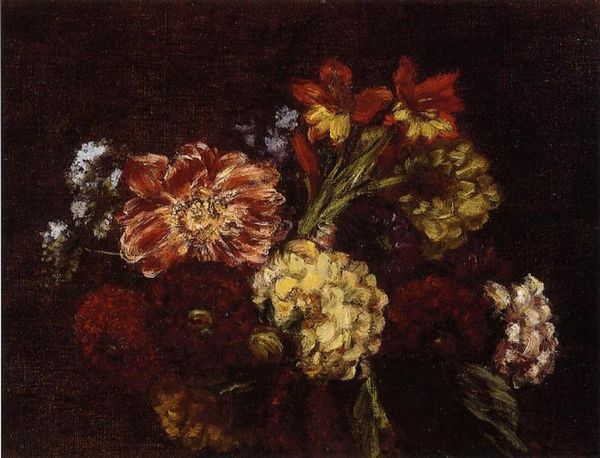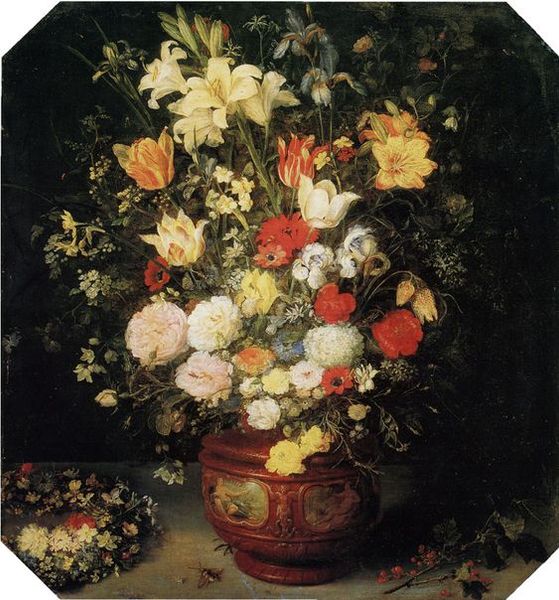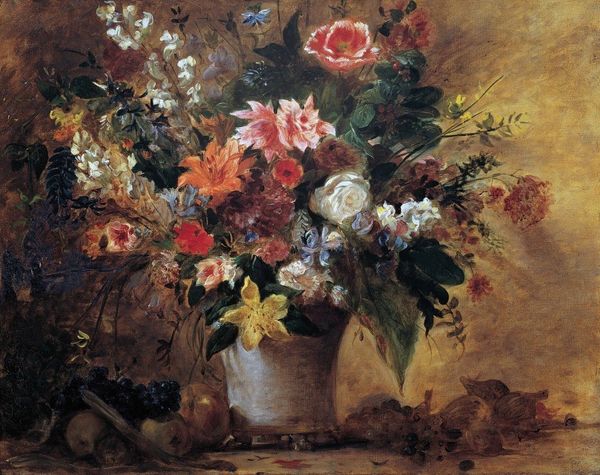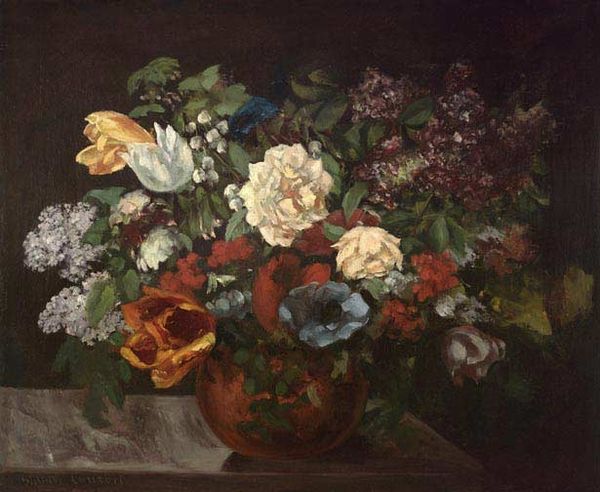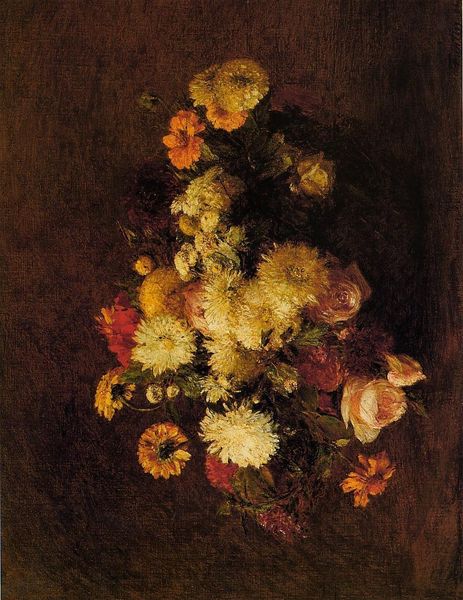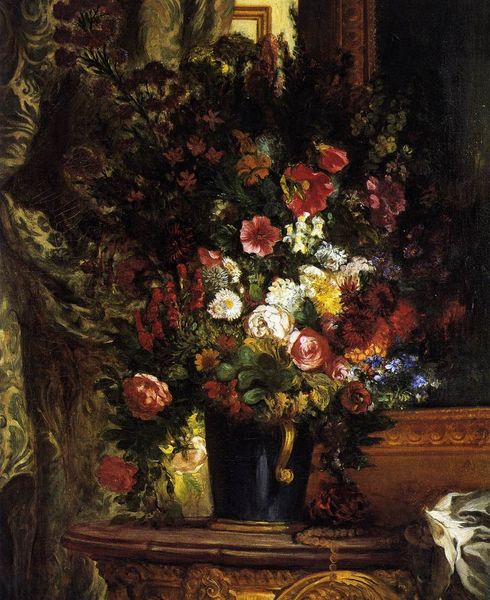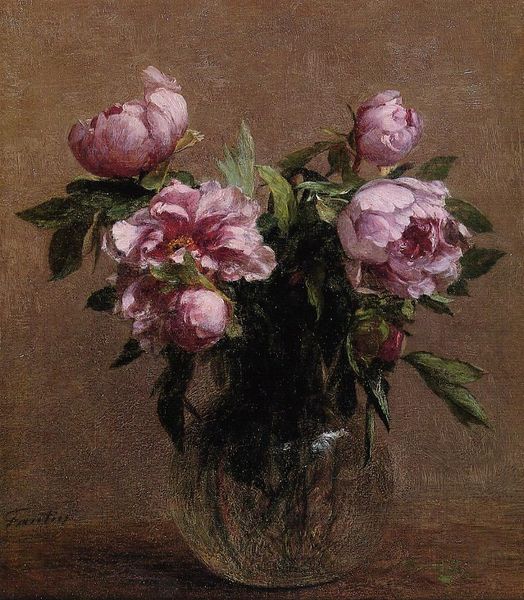
Dimensions: 40.5 x 32 cm
Copyright: Public domain
Editor: Here we have Gustave Courbet’s "Branch of Apple Blossoms" painted in 1871, using oil on canvas. It’s incredibly vibrant despite the dark background, almost bursting with life. I’m curious, what historical context might illuminate our understanding of this still life? Curator: Given the 1871 date, this painting comes directly after the Franco-Prussian War and the Paris Commune. Consider the political turmoil Courbet was deeply involved in, even imprisoned for his role in destroying the Vendôme Column. This serene image could be interpreted as a deliberate contrast to the chaos of that time. A yearning for peace, perhaps, a focus on the beauty of the natural world away from political conflict. Editor: That’s fascinating! So, was he consciously turning away from social realism toward something more… restorative? Curator: Perhaps. Or consider that Courbet was a staunch republican. Floral still lifes, while seemingly apolitical, were also traditionally associated with the aristocracy. By painting this subject matter, was Courbet challenging those associations, democratizing beauty itself? Consider, too, how the rise of photography impacted painting. How might Courbet's style engage with or depart from photographic realism? Editor: That reframes the work entirely! It's no longer just a pretty picture, but a statement about class, politics, and the evolving role of art in society. I didn't even think of that! Curator: Exactly! The power of art often lies beyond the surface. Context is key. Editor: I’ll definitely carry that with me. Thank you for sharing your perspective on its complex role within French society. Curator: And thank you for bringing such fresh eyes to the sociopolitical landscape reflected in seemingly simple beauty.
Comments
No comments
Be the first to comment and join the conversation on the ultimate creative platform.
